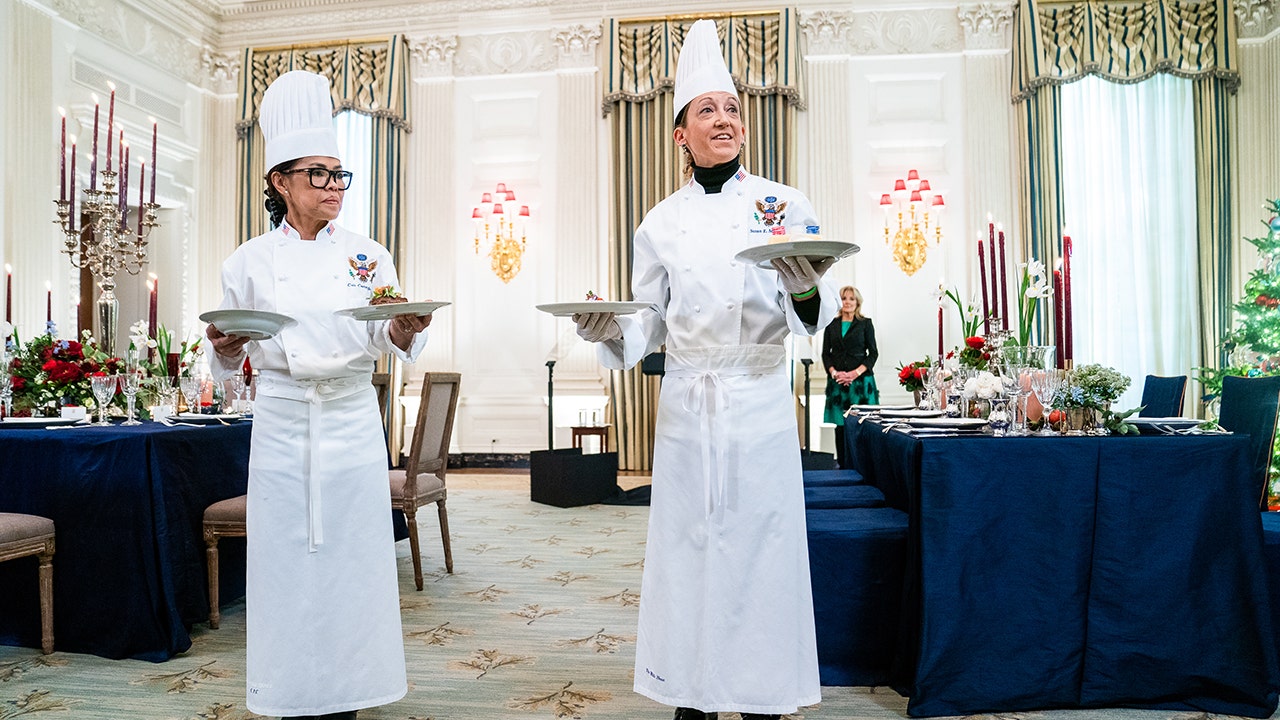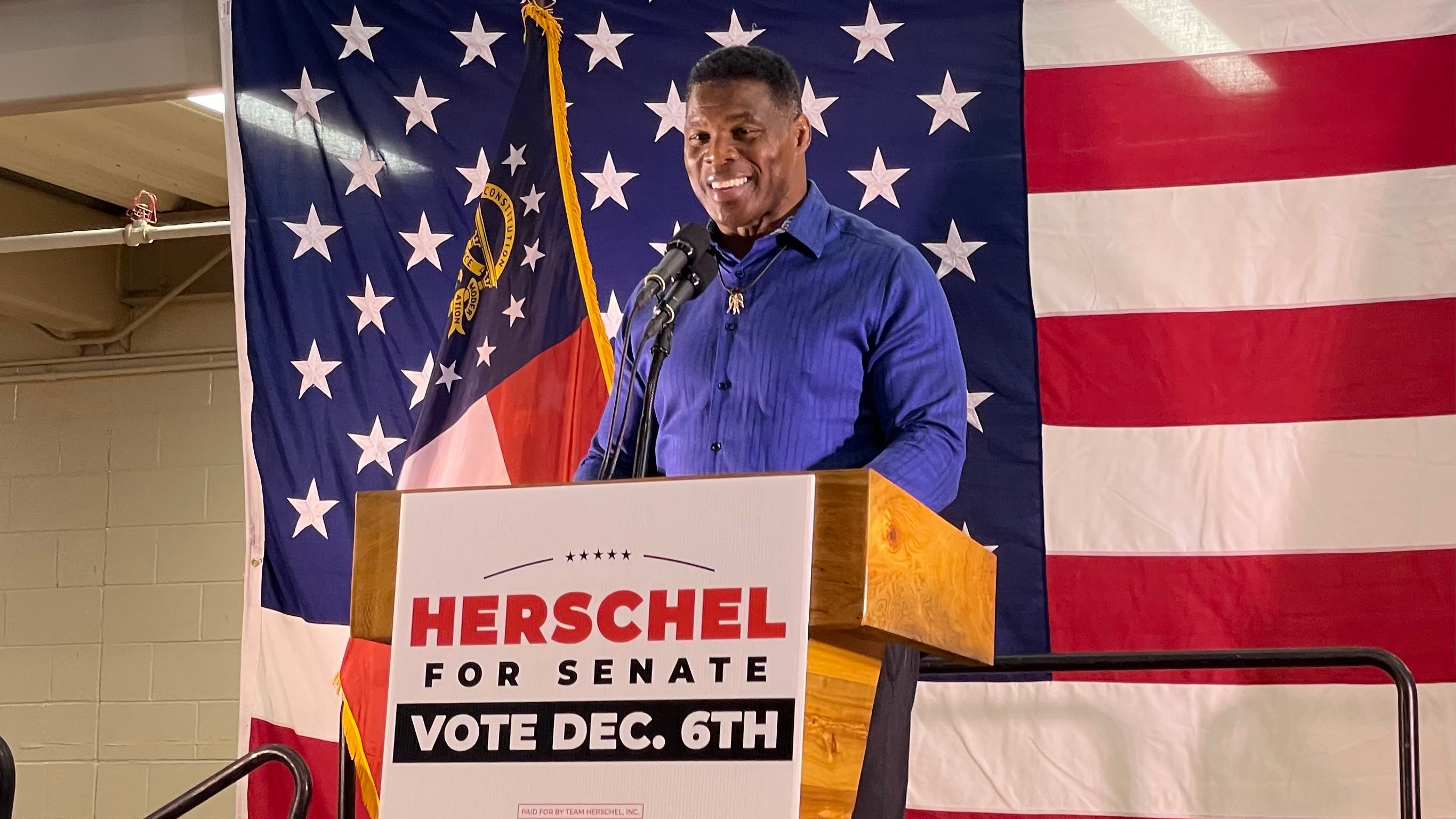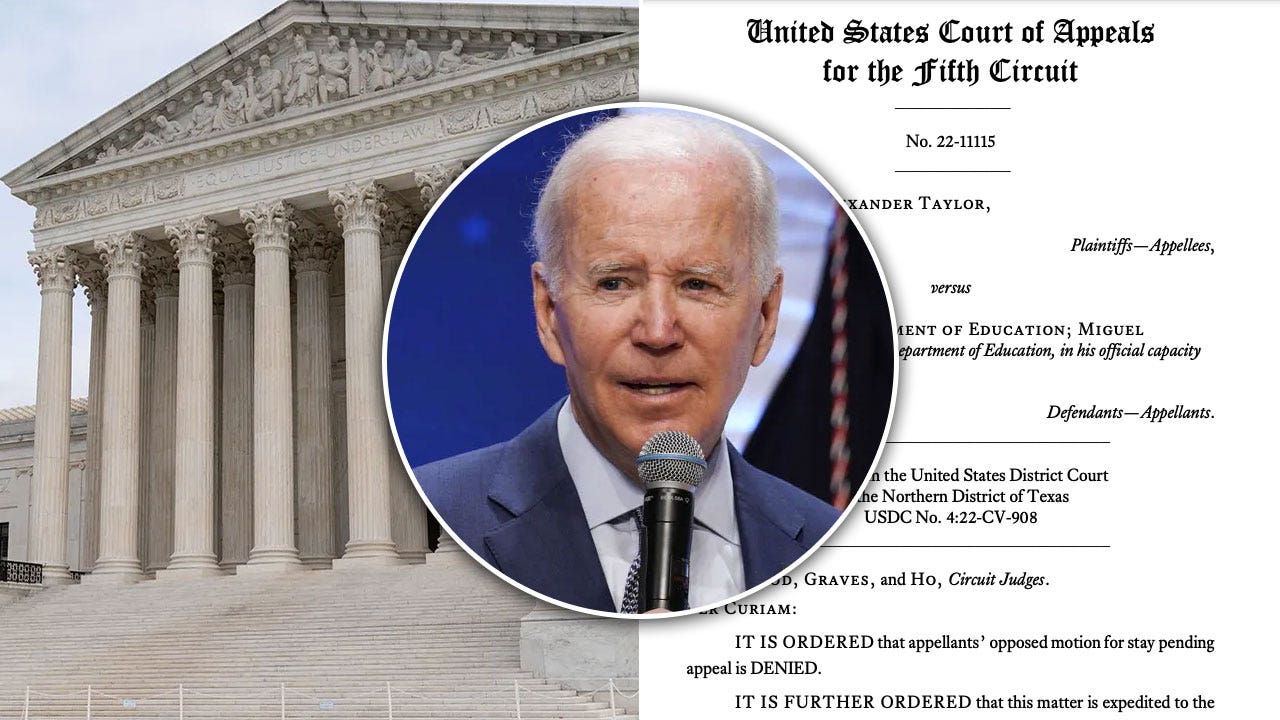The United States in the next few days will deploy 3,000 more troops to Romania, Poland and Germany amid the ongoing situation between Russia and Ukraine, the Pentagon said Wednesday.
Last week, Defense Secretary Lloyd Austin put 8,500 U.S. troops on heightened preparedness, as President Biden and his national security officials weighed where to send troops in Eastern Europe to aid Ukraine as part of a broader NATO effort, while Russian President Vladimir Putin threatened incursion.
Pentagon press secretary John Kirby, during a briefing with reporters Wednesday, said the United States “stands shoulder to shoulder with our NATO allies.”
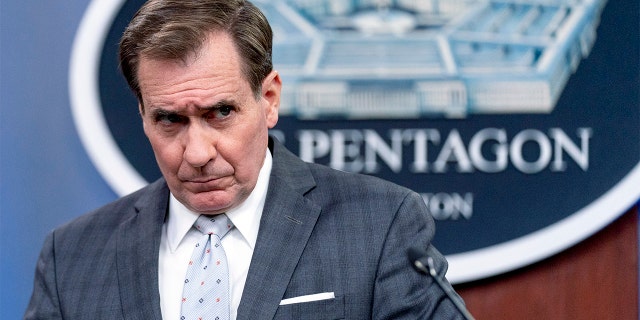
Pentagon spokesman John Kirby takes a question from a reporter during a briefing at the Pentagon in Washington, Wednesday, Feb. 2, 2022.
(AP Photo/Andrew Harnik)
“The current situation demands that we reinforce the deterrent and defensive posture on NATO’s eastern flank,” Kirby said.
The 3,000 troops include 2,000 from 82nd Airborne Division and 18th Airborne Corps, based in Fort Bragg, North Carolina, and 1,000 who are currently based in Germany. The troops from Germany will deploy to Romania, the 82 Airborne soldiers will go to Poland, and the 18th Airborne forces will go to Germany.
RUSSIA-UKRAINE: US SENDING MORE TROOPS TO NATO’S EASTERN FLANK: LIVE UPDATES
“These forces are not going to fight in Ukraine,” Kirby maintained. “They’re going to ensure a robust defense of our NATO allies.”
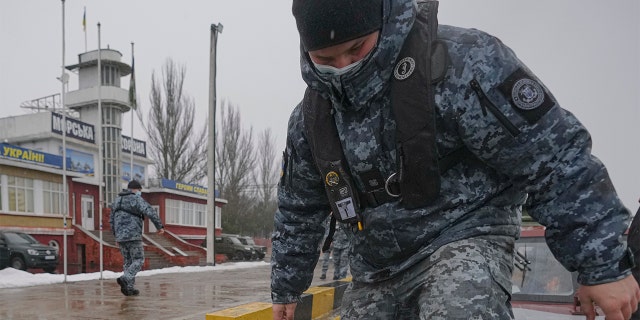
A Ukrainian marine border guard walks on the deck of a boat after a patrol in the Sea of Azov, waters near Mariupol, Donetsk region, in eastern Ukraine, Wednesday, Feb. 2, 2022.
(AP Photo/Vadim Ghirda)
There are already approximately 900 U.S. troops in Romania.
“This force is designed to deter aggression and enhance our defensive capabilities, and we expect them, as I said, to move in the coming days,” Kirby said.
He added that the force from Fort Bragg is “trained and equipped for a variety of missions to deter aggression and to reassure and to defend our allies.”
But Kirby said that the 8,500 troops that Austin put on heightened standby “are not currently being deployed, but remain ready to move if called for the NATO response force or as needed for other contingencies as directed by the secretary or by President Biden.”
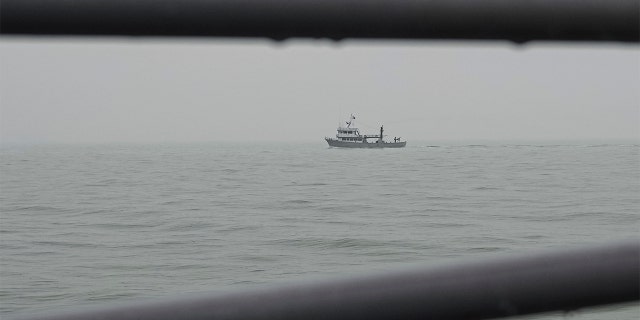
A Ukrainian serviceman mans a heavy machine gun on a military navy ship patrolling the Sea of Azov, waters near Mariupol, Donetsk region, in eastern Ukraine, Wednesday, Feb. 2, 2022.
(AP Photo/Vadim Ghirda)
When asked whether the U.S. is moving troops due to evidence Putin plans to cross Ukraine’s borders, Kirby maintained that it is “important that we send a strong signal to Mr. Putin and frankly, to the world that NATO matters to the United States, it matters to our allies.”
“And we have ironclad Article Five commitments,” Kirby added. “An attack on one is an attack on all.”
At this point, though, the Pentagon said they have “clear evidence every day” that Putin is continuing to “destabilize the environment by adding more forces into the western part of the country and along Belarus, in addition to additional naval activity in the Mediterranean and North Atlantic.”
“He clearly is providing himself many options, lots more capabilities for exactly what purpose? We don’t know right now. And because we don’t know exactly what his purpose is, we want to make sure we’re ready on the NATO front to defend our allies,” Kirby said.
Kirby said the Pentagon is “continuously reviewing our posture,” and may soon have “additional posture decisions to announce, including movements that are part of ongoing military exercises.”
“This is not a sum total of the deterrence actions we will take or those to reassure our allies,” he said. “We stand united. We have said that repeatedly. We say it again today. These movements are unmistakable signals to the world that we stand ready to reassure our NATO allies and deter and defend against any aggression.”
Kirby, though, doubled-down on the sentiment expressed by Austin and Chairman of the Joint Chiefs of Staff Gen. Mark Milley last week.
PENTAGON: RUSSIA BUILDUP ON UKRAINE BORDER IS LARGEST SINCE COLD WAR, CONFLICT WOULD BE ‘HORRIFIC’
“We do not believe conflict is inevitable,” Kirby said. “The United States in lockstep with our allies and partners, has offered Russia a path to de-escalate.”
He added: “But we will take all prudent measures to assure our own security and that of our allies.”
Last week, top defense officials said the build-up of world-regions troops along conflicts border is the largest since the Cold War, and warned that conflict in Eastern Europe would be “horrific,” but stressed that it is “not inevitable,” maintaining that there is “still time and space for diplomacy,” as the Kremlin continues to threaten further incursion in Ukraine.
And on Monday, President Biden threatened Russia with “swift and severe consequences” should Moscow choose to “walk away from diplomacy and attack Ukraine,” maintaining that the United States and allies are continuing “to prepare for every scenario.”
“The world must be clear-eyed about the actions Russia is threatening and ready to respond to the risks those actions present to all of us,” he said, noting that Monday’s meeting of the U.N. Security Council is a “critical step in rallying the world to speak out in one voice: rejecting the use of force, calling for military deescalation, supporting diplomacy as the best path forward, and demanding accountability from every member state to refrain from military aggression against its neighbors.”
The president’s statement was made public as the U.N. Security Council met for the first time to discuss the ongoing situation — as Russia has stationed an estimated 100,000 troops near Ukraine’s borders, stoking fears of an invasion.
Also on Monday, White House press secretary Jen Psaki announced that the Biden administration has developed “specific sanctions packages” for Russian elites and their family members if Moscow invades Ukraine.
Biden, during a call with Ukrainian President Volodymyr Zelenskyy last week, warned of a “distinct possibility” of a Russian invasion in February.
Zelenskyy, though, said Ukraine is “not seeing any escalation bigger than before,” and said the Russian build-up of troops could be an attempt by Moscow to exert “psychological pressure” and sow panic.
But Russia has denied it intends to launch an attack. Russian officials said NATO must promise not to allow Ukraine to join the alliance, among other demands, which the United States and NATO have rejected.
Kremlin spokesman Dmitry Peskov said Monday that “hysteria promoted by Washington triggers hysteria in Ukraine, where people are almost starting to pack their bags for the front line.”
CLICK HERE TO GET THE FOX NEWS APP
Russia Ambassador Vasily Nebenzya on Monday slammed the West, claiming it is trying to will a Ukrainian war into existence.
“The deployment of Russian troops within our own territory has frequently occurred on varying scales before and has not caused any hysterics whatsoever,” he said. “The discussions about a threat of war is provocative in it of itself.”
Nebenzya added: “You are almost calling for this, you want it to happen, you are waiting for it to happen as if you want to make your words become a reality.”
Ukraine’s territory has long been in Putin’s crosshairs, especially amid recent NATO considerations of potentially allowing Ukraine to join the alliance. It is one of several post-Soviet republics in the region that shifted toward an alliance with the West after the collapse of the Soviet Union.
CLICK HERE TO GET THE FOX NEWS APP
Putin was in the Soviet KGB for many years before beginning his political career and has said the collapse of the Soviet Union was the “greatest geopolitical catastrophe” of the 20th century.
Putin also has stressed Russian ethnic and cultural influences in Ukraine as reasons why it should be part of Russia. That was a significant part of the justification Russia used when it illegally annexed the Crimea region of Ukraine in 2014.
Fox News’ Jennifer Griffin contributed to this report.






